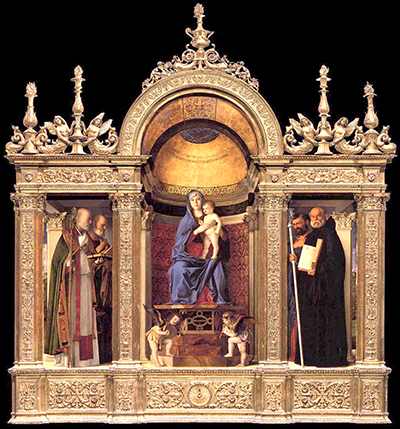The works of Giovanni Bellini have continued to have dominance in the art world for centuries now. Frari Triptych is one of such works whose fame and relevance has failed to fade away.
Frari Triptych is done in a religious technique of painting. Although this artwork dates back to 1488, there are very few paintings that can match its style. Perhaps, the time that the artist took to finish Frari Triptych has much to do with this peculiarity.
Indeed, the three years that the artist invested in coming up with the artist is worth the product. This painting which is found in Santa Maria Gloriosa dei Frari which is in Venice even has an accurate date on the rear side that indicates the year of completion, placing it at 15 February 1488. This date precision shows how seriously the artist took the painting.
A keen look at the painting suggests that it was possibly demanded by the commissioner. The central scene that is occupied by Madonna and the child who are enthroned with two angels who are musicians makes her remain forceful in the work. The art is very tactful since Madonna is flanked to the right by Saint Mark and Saint Benedict and to the left by Saint Nicholas and Saint Peter. Bellini is apt to use this old fashioned style to his advantage and integrates the painted architecture and the frame made from wood.
The designer of the frame happens to be the artist himself. In the Frari Triptych, Bellini presents Madonna with much emphasis to her as is evident with the blue colour that emphasizes the depth of her throne. No one will fail to get the attraction to the center where Madonna is placed in the Frari Triptych as soon as they look at the painting. This is the center of attraction. The throne itself is a high marble throne and the placing of the virgin in a deep blue mantle on the throne is tactical with unfailing results.
All this is achieved by use of golden lighting together with a rarely used Byzanto-Venetian-style apse. The authority of the painting comes from the fact that there is an apparent depth of the throne where one will see some vast space behind the painting where any viewer will catch the inscription seeking Gods direction and guidance.




